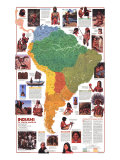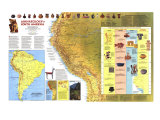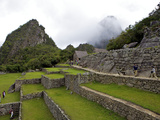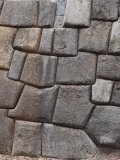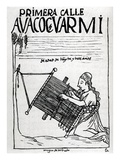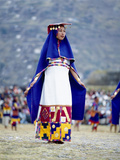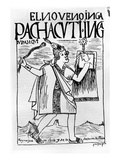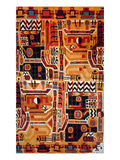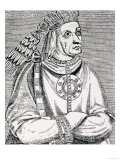|
|
|
|
|
|
|
BOOKS ABOUT THE INCAS & INCAN CULTURE
|
|
|
|
|
|
|
|
|
|
|
|
|
|
|
|
|
|
|
 |
|
|
|
|
|
Inca Empire and Inca Culture Posters, Prints & Charts
for the social studies classroom, home schoolers, and themed decor for office and studio.
|
social studies > Native Americans > INCA EMPIRE & CULTURE POSTERS < South America
|
|
|
The Incas
(A.D. 1200 — A.D. 1533)
The Inca Indians ruled one of the largest and richest empires in the Western world which at its height stretched for 2,500 miles along the western coast of South America. It included parts of the present-day countries of Peru, Bolivia, Colombia, Ecuador, Argentina and Chile. The empire was centered around the capital city of Cuzco, located high in the Andes mountains, from there the Inca ruler controlled the lives of his 6 million subjects.
The Inca began their rise to power in the year 1200. At that time, there had already been civilizations in the highlands of Peru for more than 1,000 years. It was from these earlier civilizations that the Incas learned to build fortress walls made from huge blocks of carefully carved stone. The Incas did not use mortar to hold the stones together. Instead, they carved the stones so precisely that they fit perfectly. And many of their walls still stand, despite the many earthquakes that have struck Peru.
The Inca were farmers, and they found ways to grow corn and potatoes at elevations of 11,000 feet and higher. They build terraced fields along the steep mountainsides in order to increase the amount of land they could use for growing food. The Inca were also known for their fine cloth and beautiful jewelry.
The vast Inca empire was held together by a system of stone highways. Swift runners used these highways to carry messages from the Inca ruler to all parts of the empire.
Religion was very important to the Inca. Their most important god was Inti — the sun god.
The Inca never developed a system of writing. But special officials kept detailed records with a device called a quipu (key-poo), which was a length of cord with knotted strings of different sizes and colors. Each color or knot stood for a different item.
In 1532, the Spanish explorer Francisco Pizarro arrived in South America. Within months, Pizarro and his army had slaughtered most of the Incas and taken the Inca ruler, Atahualpa, prisoner. And even though he paid a huge ransom of gold and silver, Atahaulpa was killed.
The Spanish tried to destroy all traces of the Inca empire. But fortunately many Inca objects and ruins have survived the centuries — including the famous city of Machu Picchu ... (Text from a no longer available poster.)
• The Ancient Inca (People of the Ancient World)
|
|
|
|
|
Machu Picchu, “Old Peak”, one of the most recognized image of the Inca Empire, was built as an estate of an Inca emperor, the site chosen for its sacred landscape features in alignment with key astronomical events.
Situated on a mountain ridge above the Urubamba River valley in the Andes Mountains of Peru, Machu Picchu was known to the local population before being brought to international attention in 1911 by historian Hiram Bingham.
It was designated a UNESCO World Heritage site in 1983.
Machu Picchu is also across a valley from the ruins of Vilcabamba, a city founded by Manco Inca in 1539 as a resistence to the conquistadors. Vilcabamba was destroyed in 1572 by the Spanish.
|
|
|
|
Cusco (also Cuzco) was the capital and crossroads of the Inca Empire (13th century-1532). Many think the city was planned as an effigy in the shape of a puma, a sacred animal, that symbolizes the political and religious head and heart of the Inca Empire.
Cuzco was declared the historical capital of Peru by the Peruvian Constitution.
|
|
|
|
|
|
|
|
|
|
Atahualpa
b. Cusco, Peru
d. c. 8-29-1533; Peru
Atahualpa was the last sovereign emperor of the Inca Empire. Spaniard Francisco Pizarro captured Atahualpa and used him to control the Inca, eventually executing him by garrote.
FYI - Atahualpa is also the name of a WordPress blog theme.
• Indigenous Americans posters
|
|
|
|
Quipu (Spanish spelling), a recording devices used by the Inca, usually consisted of colored spun and plied threads from llama or alpaca hair or cotton cords with knots that encoded tax, census and events data. The knots seem to represent a base 10 positional system. Some kuipu (kuipu is word for “knot” in Quechua, the native Inca language) may have just a few strands, others have up to 2,000 strands.
North American indigenous peoples' wampum was also used in a similar way.
|
|
|
previous page | top
social studies > Native Americans > INCA EMPIRE & CULTURE POSTERS < South America
|
|
I have searched the web for visual, text, and manipulative curriculum support materials - teaching posters, art prints, maps, charts, calendars, books and educational toys featuring famous people, places and events - to help teachers optimize their valuable time and budget.
Browsing the subject areas at NetPosterWorks.com is a learning experience where educators can plan context rich environments while comparing prices, special discounts, framing options and shipping from educational resources.
Thank you for starting your search for inspirational, motivational, and educational posters and learning materials at NetPosterWorks.com. If you need help please contact us.
|
|
|
|










